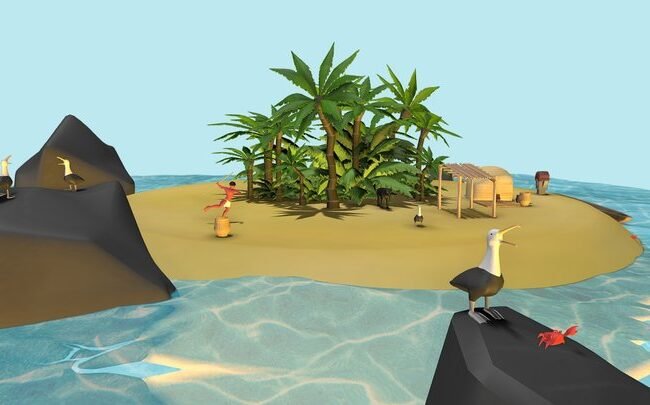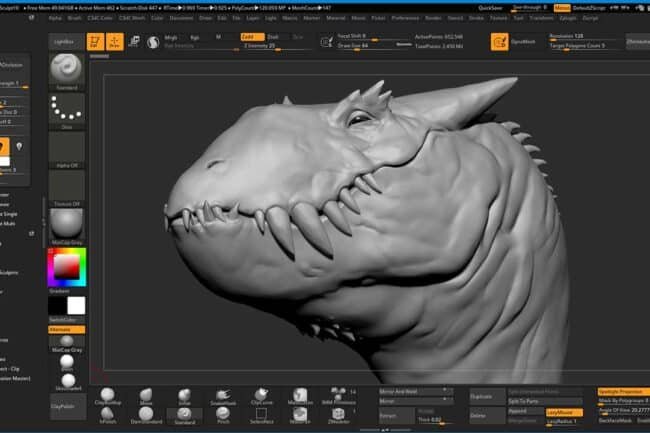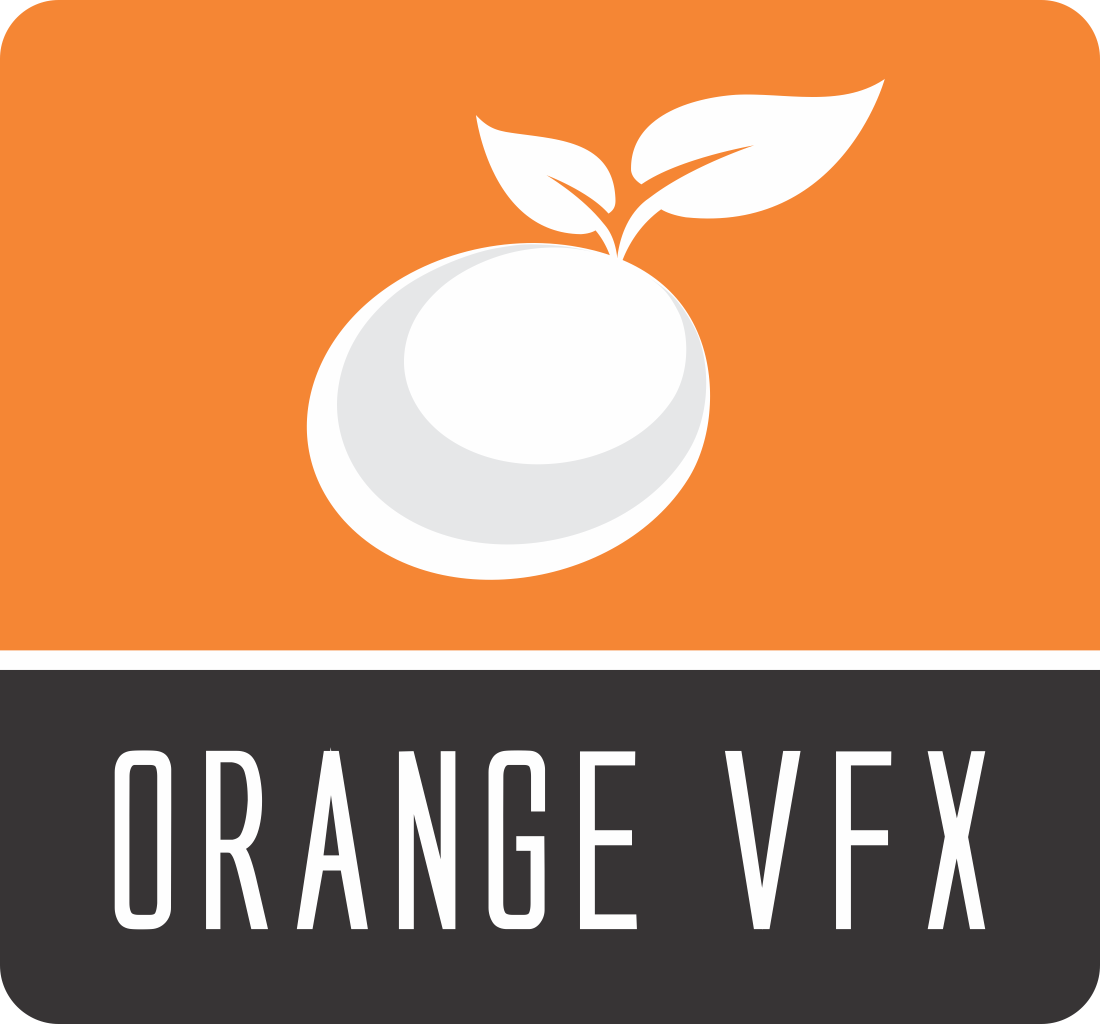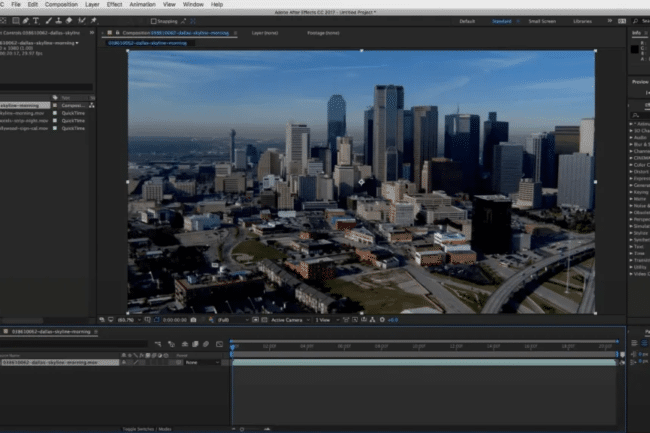Animation is a beautiful work of art achieved through ideas, imagination, and the effective use of required software. Animation software has become increasingly popular over the past few years. With technological advancements, animators can now create stunning visuals with ease and speed.
Before the advent of technology, animation was done through xerography (a process of dry photocopying that allowed animators to forgo the need to ink animations by hand), Cel animation (the process involved characters being hand-drawn on transparent celluloid sheets and placing overpainted background), Multiplane Process (typically involved moving several pieces of artwork at various speed and at different distances from one another). These processes made animation tedious, and it could have produced better work, but it didn’t.
There is a wide variety of animation software available today, from free programs to high-end professional suites, some for 2D animation and others for 3D animation.
Some of the most recommended 2D Animation Software include:
- Toon Boom
- Adobe After Effects
- Illustrator (specifically for designs)
- Moho Pro
- Animaker
- Cartoon Animator
- Blender
Today, 3D animation programs are in high demand and are extremely useful to both animators and designers. Some animation software is available for free, while others are paid programs. The world around us is changing at a breakneck pace, and industries are expanding faster than anyone could have predicted.

Picture Credit: https://autode.sk/3jRwkbw
3D Animation software creates 3D movies, video effects, motion graphics, visual effects, and animation videos. Some of the most widely used and popular animation programs are:
- Autodesk Maya
- Autodesk 3Ds Max,
- Blender
- Cinema 4D
- ZBrush,
- LightWave 3D.
The animation sequence is created digitally using an operating system and software, making animation movies easier and simpler.
Of all these options, there are six that stand out as being particularly useful to us for creating animations: Adobe After Effects, Autodesk Maya, Blender, Cinema 4D, Adobe Character Animator, and Adobe Animate.
Adobe After Effects
Adobe After Effects is a powerful motion graphics and animation software professionals use worldwide. From creating stunning visuals for films, television shows, commercials, video games, and more – After Effects has become an essential tool in any creative’s arsenal. Its intuitive user interface and comprehensive features can be used to create almost anything imaginable.
Whether you are a beginner or an experienced professional looking to expand your skillset – Adobe After Effects has something for everyone! It allows users to easily manipulate layers with keyframes that control various parameters such as position, and scale size rotation, which gives them complete control over how their animations look on screen. Additionally, hundreds of effects are available from built-in plugins like Lightning Strike or Particle Playground, allowing users to quickly add special effects to their compositions with just a few clicks of the mouse!
After Effects also offers 3D capabilities allowing artists to take advantage of advanced camera tracking tools and environment mapping techniques, giving them even more options when creating complex scenes or environments within their projects. This makes it ideal for film production, where intricate visual elements need precise placement within 3D space and elaborate lighting setups – without having access to expensive hardware rigs usually associated with this type of work!
Furthermore, Adobe’s Dynamic Link feature allows users working in other programs like Photoshop & Premiere Pro seamlessly integrate assets between each application so they can continue editing without ever leaving one program while still maintaining complete creative freedom throughout the entire workflow process – making collaboration between multiple artists more effortless than ever before!
All these features combined make Adobe After Effect one of the most versatile pieces of software today; no matter what project you’re working on, chances are good that AE will have something to offer to help bring your vision to life faster & better than ever before!
Pros of using Adobe After Effects
- It is best suited for motion graphics, 2D animation, text animation, video editing
- It is also an excellent tool for stop-motion animation.
When integrated with illustrator, it makes great animations; when combined with premiere pro, it makes excellent videos. It can do much in both worlds, which is impressive.
Cons of Adobe After Effects
- Rendering a final project is a time-consuming process that can occasionally fail.
- If you’re a beginner, this software can be highly intimidating due to the sheer volume of information and features.
Autodesk Maya
Autodesk Maya is a powerful 3D modeling, animation, and rendering software used by professionals in the entertainment industry. It has been around since 1998 and is one of the most popular programs for creating high-quality 3D visuals. Whether you’re an animator, modeler, or visual effects artist – Autodesk Maya can help you create stunning digital art that will wow your audience.
In terms of its features, Autodesk Maya offers many tools to help bring your ideas to life, such as character rigging and animation tools; advanced particle simulations; NURBS curves & surfaces; UV mapping tools; terrain sculpting capabilities; nonlinear editing options; custom shader creation with Arnold renderer support; a node-based compositing system called Hypershade, among others. It also supports real-time playback with NVIDIA GPUs using OptiX AI denoising technology which helps reduce render times significantly. The program also comes packed with several scripts that allow users to quickly set up complex scenes without manually adjusting settings each time.
From a user experience perspective, Autodesk Maya provides an intuitive interface where all its various features are easily accessible from within one main window, making it easy for both beginners and experienced users alike to navigate through their projects faster than ever. Furthermore, plenty of online tutorials can be beneficial when starting this journey into the 3Dmodelingg world!
If you’re looking for a comprehensive suite of professional-level software, look no further than Autodesk Maya – the perfect choice whether working on individual projects or collaborating within teams!
Pros of Autodesk Maya
- Generally, Autodesk Maya is suitable for anyone who wants advanced and high-quality 3D models and animation. It makes work faster because it possesses incredible features and presets to complete the job more quickly.
- Easy to build workflow due to robust customizability.
- It has a simple (enough) python API. It’s easy to create scripts and plugins. And there are many free or paid plugins on the internet to speed up 3d work.
Cons of Autodesk Maya
- Maya has a steep learning curve
- It is costly to use and also requires powerful hardware to run.

Photo Credit: Sketchfab- https://bit.ly/3I6aJ7k
BLENDER
Blender is an open-source 3D computer graphics software program. It can create various 3D models, animations, and visual effects. Blender has become increasingly popular due to its versatile features and user-friendly interface. With Blender, users can easily create high-quality visuals for film production, game development, architecture visualization, or any other creative field that requires complex 3D modeling tasks.
One of the main advantages that make Blender stand out from other similar programs is its ability to quickly produce realistic results with minimal effort from the user’s side. The program offers many tools, such as particle systems which allow users to realistically simulate natural phenomena like smoke or fire without having extensive knowledge of physics or mathematics. It also provides a wide range of materials and textures that enable creators to make their projects look lifelike with just a few clicks.
Finally, another great feature of Blender is its affordability since it’s free for anyone who wants access. This means people don’t have to spend thousands on expensive software licenses only get started creating stunning visuals right away at no cost! Plus, there are plenty of resources online that provide tutorials on how to use a blender, so even if you’re entirely new to this type of digital art, you’ll still be able to pick up the basics quickly enough to start making your own masterpieces.
Pros of Using Blender Software:
- It is free and open source.
- It is more versatile than most 3D programs.
- It is a community-driven project; hence it is always easy to find help with tutorials that can guide you if you get stuck using it.
Cons of Using Blender
- Extremely hardware intensive, requiring a lot of GPU and CPU power.
- Even if it creates realistic renders, rendering takes a lot of time. It even crashes while rendering if your system has a low processor.
Cinema 4D
Cinema 4D is a powerful 3D animation and rendering software used by professionals in the film, television, and gaming industries. It has become one of the most popular tools for creating high-quality visuals with its intuitive user interface, robust feature set, and wide range of plugins to customize to fit any project’s needs. With Cinema 4D, you can create stunning animations that look like professional animators made them without spending months learning complex software or hundreds of dollars on expensive hardware. The program also offers tools that allow users to build scenes from scratch or modify existing ones quickly.
One reason Cinema 4D stands out amongst other 3d programs is its ability to quickly produce photorealistic images using advanced lighting techniques such as global illumination (GI). GI simulates how light interacts with objects in a scene which results in more realistic shadows and reflections than traditional raytracing methods offer. Additionally, it includes physical render engines like Octane Render, which uses GPUs instead of CPUs for faster processing when rendering large projects. This makes it ideal for those who need quick turnaround times while simultaneously achieving excellent visual quality results.
Finally, what sets Cinema 4d apart from many other programs is its compatibility across multiple platforms, including Windows, Mac OSX, Linux & iOS. This means you don’t have to worry about not being able to use certain features due to incompatibilities between different operating systems – no matter where you are working on your project, there’s sure to be a compatible version available! In addition, flexibility allows artists to collaborate regardless of their preferred platform, making collaboration more effortless than ever before! All these factors make C4d an essential tool for anyone looking to create impressive visuals efficiently & effectively, whether they are novice hobbyists just getting started or experienced professionals seeking to add a new level of sophistication to their workflows!
Pros of Cinema 4D
Cinema 4D provides a wide range of texturing tools, including shaders, non-based materials, and 3D printing, along with several lighting features.
- Cinema 4D can accurately handle cloth, rope, soft body, and collision simulation.
- The latest version of Cinema 4D can seamlessly handle Zbrush.
Cons of Cinema 4D.
- It is expensive software to make use of
- There could be issues with body painting and UV editing
Zbrush
ZBrush is one of the most influential and popular 3D sculpting software programs available today. It has been used by professional artists, game developers, and hobbyists alike to create stunning digital sculptures easily. But what are the pros and cons of using ZBrush? Let’s take a closer look at some of the advantages and disadvantages of this incredible program.
One major pro for ZBrush is the intuitive user interface that makes it easy to learn how to use all its features quickly. The program also offers an impressive array of tools for creating detailed models from scratch or modifying existing ones in any way you can imagine – something that many other 3D sculpting programs simply cannot do as well as ZBrush does! Additionally, plenty of online tutorials can help new users get up-to-speed on how everything works within minutes.
On the flip side, however, one potential downside when working with Zbrush is its steep learning curve; while not impossible to master by any means, it will take time before users become entirely comfortable navigating through all aspects of this complex software package efficiently without making mistakes along the way (which could be costly!). Additionally, because so much power comes packed into such a small package – even experienced users may find themselves overwhelmed at times due to the sheer volume of options available in terms of customization!
Overall, if you’re looking for an incredibly versatile yet still relatively simple toolset, look no further than Zbrush – once mastered, you’ll have access to some genuinely excellent toolsets that can make your creations come alive like never before!
Pros of Using Zbrush
- This software is the priority tool for heavy sculpting
- The system of customizable brushes allows robust control that makes room for creativity.
- Zbrush has a large user community that makes it possible to get access to lots of resources.
Cons of Using Zbrush
- Difficulty in attaining specific commands or shortcuts
- It could be better suited for renders. Crashes a few times a year
- It is costly to purchase.
All the software mentioned here is fantastic; however, one will choose which software to work with based on what suits their needs. As a freelancer with a low budget, you might consider working with Blender, which is free. Still, if you work in an established studio, you will consider more sophisticated software like Autodesk Maya or Cinema 4D.

Will you like to read more educative content like this one? Subscribe to our blog and follow us on all social media platforms.

